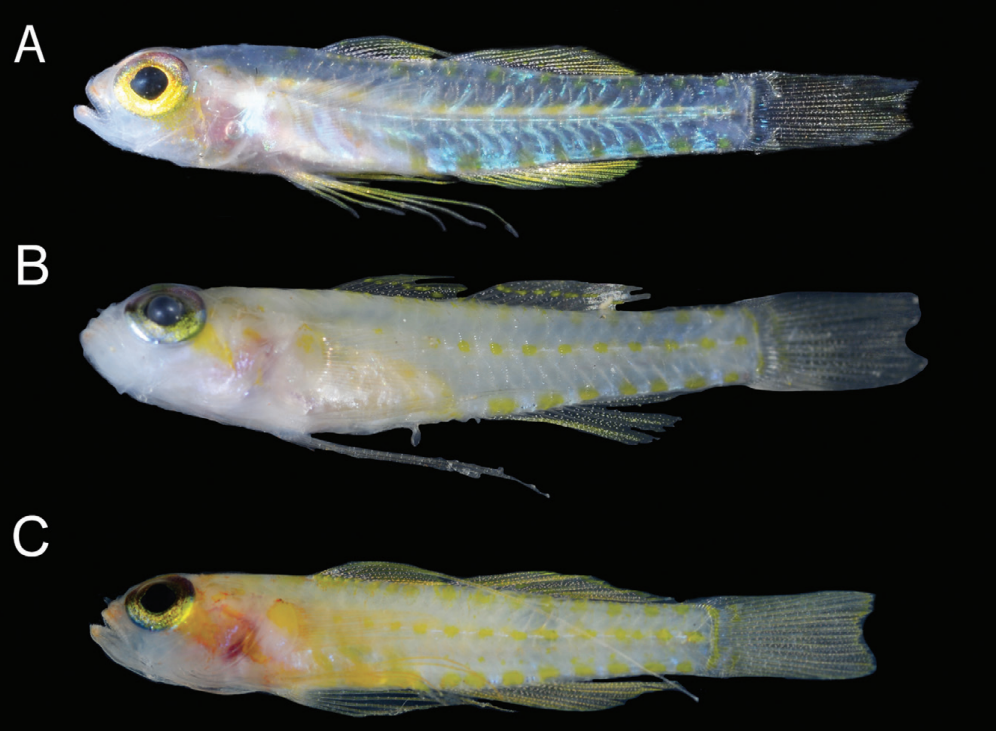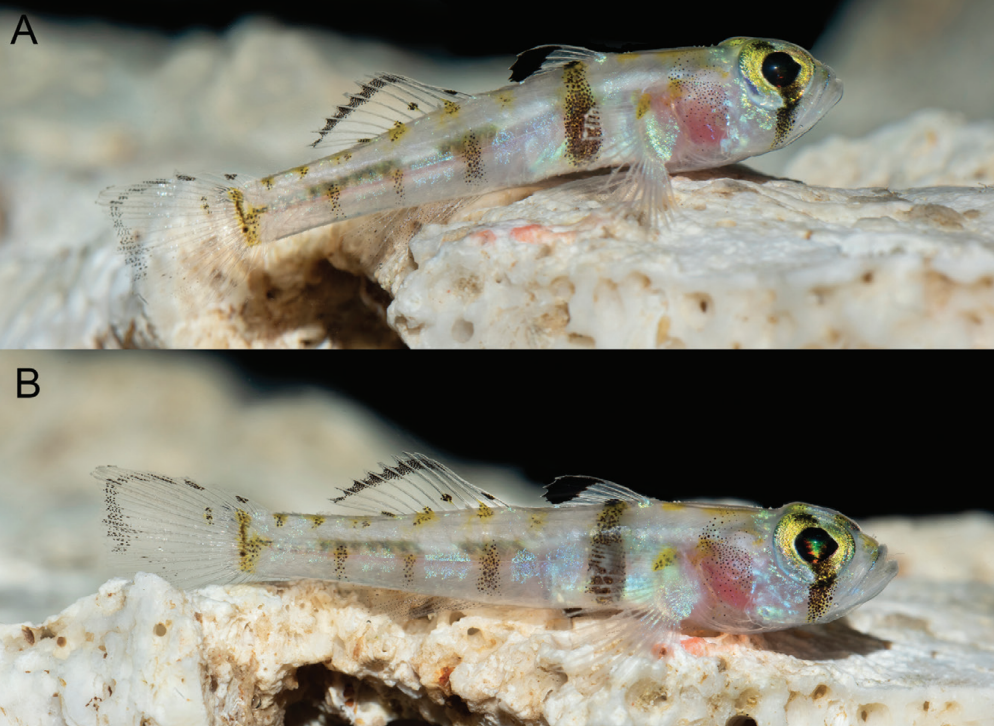Two new gobies have been collected and described from deep waters in the Caribbean Sea. New species Robinsichthys nigrimarginatus becomes only the second member of the genus Robinsichthys, while Birdsongichthys rectus is given both new genus and new species status.
The new fish discoveries have only been made possible in recent years by collection via manned submersibles. Previous to that specimens of tiny deep water gobies were few and far between and obtained sporadically via deep water trawls.

In 2018 the authors collected what they first thought was Robinsichthys arrowsmithensis – a species that was first described in 1988 by American ichthyologist Dr. Ray S. Birdsong and hailed from Yucatan, Mexico, but this one differed in terms of its morphology and collection area, this time in Curacao. It was a new species and so named Robinsichthys nigrimarginatus. The discovery of what turned out to be a second Robinichthys species coincided with the collection of several specimens of another goby, this time from the eastern Caribbean at depths from 110-241 meters in Roatan. The second fish was also a goby but it didn’t fit within Robinsichthys or other genera within the Gobiosoma group. It was placed into the new genus Birdsongichthys in reference to the initial work carried out on deep water gobies some forty years prior.
Although 1300 species strong, gobies are primarily fish of shallow coastal waters. The authors provide evidence of independent deep water invasions that happened some 20-30 million years ago. Manned submersibles have been responsible for the description of at least 12 new species of deep-water gobies from the Caribbean, nine of which were formally described prior to this study. The above work was undertaken by Luke Tornabene, Rachel Manning, D.Ross Robertson, James L. Van Tassell, and Carol C. Baldwin, and published in the Zoological Journal of the Linnean Society.



